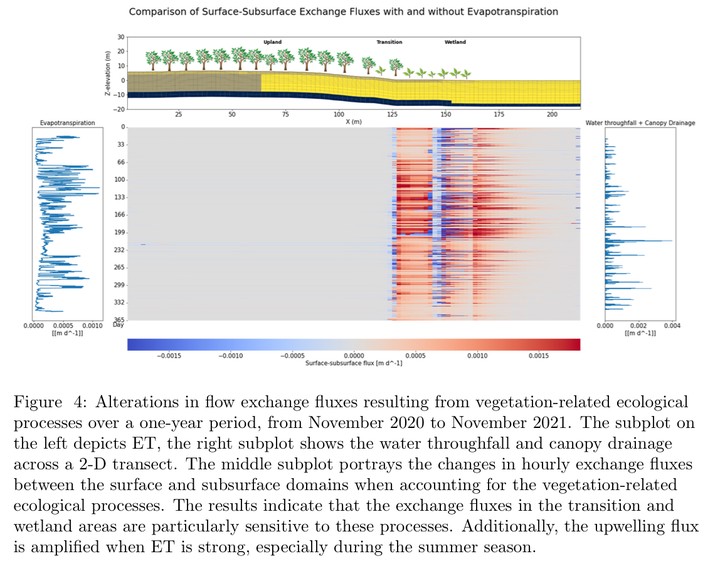Integrated effects of site hydrology and vegetation on exchange fluxes and carbon cycling at the coastal terrestrial aquatic interface

Abstract
The complex interactions among soil, vegetation, and site hydrologic conditions driven by precipitation and tidal cycles control biogeochemical transformations and bi-directional exchange of carbon and nutrients across the terrestrial-aquatic interfaces (TAIs) in the coastal regions. This study uses a highly mechanistic model, ATS-PFLOTRAN, to explore how these interactions impact the material exchanges and carbon and nitrogen cycling along a TAI transect in the Chesapeake Bay region that spans zones of open water, coastal wetland and upland forest. Several simulation scenarios are designed to parse the effects of the individual controlling factors and the sensitivity of carbon cycling to reaction constants derived from laboratory experiments. Our simulations revealed a hot zone for carbon cycling under the coastal wetland and the transition zones between the wetland and the upland. Evapotranspiration is found to enhance the exchange fluxes between the surface and subsurface domains, resulting in higher dissolved oxygen concentration in the TAI. The transport of organic carbon decomposed from leaves provides additional source of organic carbon for the aerobic respiration and denitrification processes in the TAI, while the variability in reaction rates mediated by microbial activities plays a dominant role in controlling the heterogeneity and dynamics of the simulated redox conditions. This modeling-focused exploratory study enabled us to better understand the complex interactions of various system components at the TAIs that control the hydro-biogeochemical processes, which is an important step towards representing coastal ecosystems in larger-scale Earth system models.